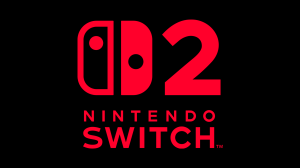IMAX is everywhere today. The large-screen format has become the go-to way to watch movies of all shapes and sizes from Avengers: Endgame to Sinners to Megalopolis and everything in between. This immersive, expansive moviegoing experience envelops viewers to such a degree (not to mention also offering such rich potential for glorious imagery) that it’s become absolute catnip for moviegoers and filmmakers alike. It’s hard to remember now, though, that IMAX hasn’t always been a de facto part of mainstream narrative moviegoing.
Videos by ComicBook.com
It wasn’t until the dawn of the 20th century, in fact, that this space started housing movies that weren’t just original documentaries made exclusively for IMAX screens. Titles like Fantasia 2000 and Treasure Planet helped upend people’s perception of what IMAX cinema “looked like.” Subsequently, five movies in particular helped mold IMAX’s reputation and solidify it as an exhibition powerhouse. Today’s cinematic landscape wouldn’t exist without these five features.
1) The Matrix Revolutions

Circa 2003, audiences were already endlessly stoked to see where the Matrix mythology went next. As if that excitement couldn’t get any more passionate, it was announced that both The Matrix Reloaded and The Matrix Revolutions would receive IMAX releases. While Reloaded would launch in IMAX auditoriums a few months after its May 2003 debut, Revolutions became the first live-action movie to simultaneously launch in IMAX and normal 35mm screenings. Today, it’s a given that a major live-action blockbuster would be available in conventional multiplexes and IMAX screens. The Matrix Revolutions, however, was the first to engage in that release strategy.
2) The Polar Express

In November 2004, The Polar Express didn’t just freak out a generation of kids with its creepy motion-capture animation. This Robert Zemeckis directorial effort was also the first narrative film to play in the IMAX 3D format. While IMAX 3D has fallen out of style in recent years for non-James Cameron films, The Polar Express in IMAX 3D was a tremendous experience that redefined what kind of spectacle movies could accomplish with those grand IMAX screens. The feature’s IMAX 3D prowess also had significant ripple effects across the film industry, including convincing former DreamWorks Animation CEO Jeffrey Katzenberg to make all of the studio’s animated features in 3D from then on.
[RELATED – Movies You Forgot Were Released in IMAX]
3) The Dark Knight

If there was any film that forever changed IMAX’s reputation in the 2000s, it had to be Christopher Nolan’s The Dark Knight. For starters, before Avatar, it was by far the biggest movie ever to be exhibited in the IMAX format. More importantly, though, The Dark Knight was the first narrative film to utilize IMAX cameras. While previous films like Matrix Revolutions or Speed Racer had been converted into the IMAX format in post-production, Dark Knight used special IMAX equipment during principal photography. Suddenly, the possibilities of what movies could accomplish with IMAX-specific tools were upended forever. Meanwhile, Nolan’s love affair with IMAX was solidified.
4) Avatar

The Dark Knight burst open the door for IMAX’s possibilities with major blockbusters and, just 17 months later, Avatar sauntered through it. James Cameron’s expansive imagination proved a perfect match for the gloriously gargantuan IMAX screens. Audiences absolutely ate up Avatar in IMAX. Not only that, but Avatar reaffirmed IMAX’s appeal in countless international territories, including China. Just six years before Avatar, no live-action film had ever simultaneously debuted in normal theaters and IMAX screens. After Avatar’s historic box office run, this would now be the de facto release strategy for all blockbusters going forward.
5) Mission: Impossible – Ghost Protocol

For 30 minutes of Mission: Impossible – Ghost Protocol, IMAX cameras were used to capture critical set pieces. That included the now iconic Burj Khalifa sequence, which really let audiences feel the vertigo Ethan Hunt is navigating as he maneuvers the outside of the world’s tallest building. While Dark Knight was set in Gotham City and Avatar was on Pandora, Ghost Protocol was an enthralling reminder of all the visual wonders IMAX technology could unlock in the real world. Meanwhile, Ghost Protocol played for its first five days in North America exclusively in IMAX auditoriums to incredibly lucrative results. This unique release strategy hasn’t been re-attempted a lot since (save for the occasional Everest or The Walk), but it reaffirmed how important IMAX had become to major studio offerings. Plus, it was a majorly positive signal that the ultimate movie star, Tom Cruise, was now headlining IMAX releases.
Mission: Impossible – Ghost Protocol is now streaming on Prime Video and Paramount+.








